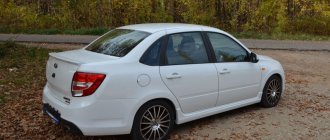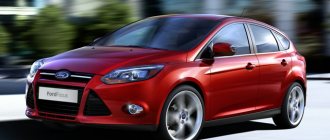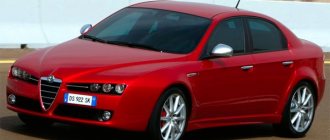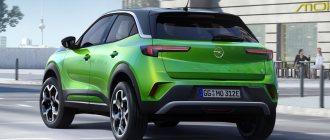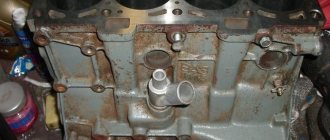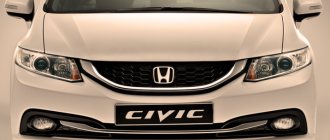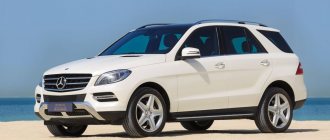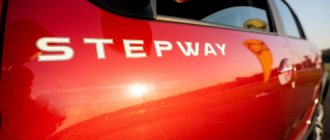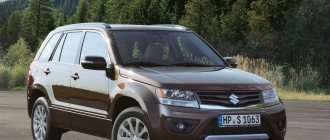Test drive Volvo S60 D4 Drive-E: myth buster
It's time to cede the market to smaller cars. But few people believe that less (for example, the number of cylinders) will bring something more in the future. This is the current trend, and not just at Volvo.
Many automakers, betting on reduction, are losing their loyal fans. Well, old clients leave, new ones come. That is life.
Personally, it seems to me that smaller engines are just an attempt by automakers to comply with increasingly stringent environmental requirements, avoid possible fines and, thereby, keep prices at the same level. This trend does not bring anything good to buyers. Well, let's see if it's really time to lay flowers on the grave of five-cylinder engines.
Being concerned about the environment, the Swedes did not turn to other brands, but resorted to internal reforms. The result was the introduction of four-cylinder Drive-E engines.
They differ only in the method of supercharging and the number of cylinders. Advertising promises a lot as usual. But we decided that it was better to see for ourselves by testing one of the first carriers of the new engine.
In 2000, with the arrival of the first generation S60, it became clear that Volvo no longer intended to produce boxes on wheels. Ten years later, this fact was confirmed. The segment of middle-class cars has come with rounded shapes, a dose of extravagance and a desire for some kind of sportiness. Swedish originality, however, has not disappeared. After last year's design changes, the car completely lost its aggressiveness, its features smoothed out.
The main signs of modernization were the new radiator grille (now it is longer and wider), excessive use of chrome elements and a new hood shape.
The S60 now looks like a smaller S80 flagship sedan - good news for all lovers of German moderation. You can find in it features of the smaller V40 hatchback, and indeed everything that Volvo has invented recently.
Split headlights are a thing of the past, replaced by new and more elegant ones. The same motif is present in the new bumper with horizontal rows of LEDs that fit into a discreet chrome curve. The adaptive cruise control radars and grille-mounted blind-spot sensors look out of place. But overall, the S60 remains itself in all respects: modest body length, narrow trunk opening and relatively long wheelbase.
What's in the cabin? It's still the same IKEA, only with a touch of luxury.
The interior remains virtually unchanged - all the same high-quality materials and bold Swedish design. The window lift buttons and levers behind the steering wheel have clearly been touched by the breath of time, but the aluminum decorative elements and plastic dashboard still look rich.
The touch of luxury and quality is clearly felt, which will play an important role in the eyes of potential buyers. In terms of roominess, the driver won't have to suffer, but his knee will still be resting on the middle console. Even the new seats didn't bring much change. The soft filling and wide seats remind you that comfort is as important to Volvo as always.
A noticeable change concerns the optional adaptive TFT display with three image modes. S60 got it from V40. Unlike the classic version, it looks more modern; everyone will find in it exactly the information they need: a digital speedometer or road signs.
There is practically nothing to say about the steering wheel, which remains just as wonderful, and now also heated.
But nothing good can be said about the heated windshield. At night and in bad weather, everything looks like a fog; even modern adaptive bi-xenon headlights do not help. Small veins covering the entire glass scatter the rays of light from oncoming cars, making the driver no longer understand what is happening right in front of his nose.
The start-stop system is just as terrible. The only good thing is that after deactivation it will remain turned off even after the engine is restarted, which is almost a miracle these days.
The 380-liter trunk is more reminiscent of a hatchback or convertible than a full-fledged middle-class sedan. In general, the interior looks, we repeat, like an expensive IKEA - nothing particularly disappointing, but also not pleasing.
Volvo relied on a two-liter diesel Drive-E with two turbochargers of different sizes. Another innovation is a very low compression ratio (15.8:1) and new i-Art technology with common-rail injection from Denso. The system operates at a never-before-seen maximum pressure of 2,500 bar.
Among two-liter diesel engines, the new Drive-E is quite competitive. Of course, German rivals like BMW and Mercedes can offer more, but you'll also have to shell out a fair amount of money for it.
With a new automatic 8-speed transmission, the manufacturer promises a consumption of 4.1 liters. Acceleration to 100 km/h occurs in less than 7.5 seconds. True, only in theory. In practice, I completed the test at 6.6 l/100 km in the combined cycle; on the highway I managed to consume no more than 5.7 l, in the city - 7.5 l.
When starting, the engine sounds louder than one might expect, but only outside, there is silence in the cabin. You pass the first kilometers on a wave of complete comfort. When you sharply press the gas pedal, you feel a slight “turbo hole”, but the rapid increase in kilowatts makes it clear that the car has good potential in terms of dynamics.
From 1500 rpm the engine pulls decisively and naturally, and at mid-range it picks up a decent pace. Even crossing the 4000 limit will not be painful, because the maximum is 181 hp. is even further away. After this, the unit gradually loses ground to allow the automatic to switch to the next gear at 4800 rpm.
The first six gears are quite short, leaving two more for low revs on the motorway. Thanks to them, you can move without problems at 1800 rpm.
In general, our verdict: no one will shed tears for five-cylinder engines.
The chassis of the tested car, one of four possible, is presented under the designation Comfort. It fully corresponds to the name, since a rare car is able to overcome our roads with such ease. Even life itself seems more beautiful on such wheels.
The S60 handles the faster pace with grace. But all sorts of tricks for which a traffic police officer would tear up your license on the spot, this car definitely won’t withstand. The body leans and oscillates at high speeds, and the high-mounted engine in front of the front axle ensures you quickly learn what understeer is.
The best option for this car is a relaxed pace. Don't forget that Volvo always puts safety first. This manifests itself in everything, sometimes even beyond measure. We are talking, for example, about a pedestrian and cyclist detector with a panic braking function or the City Safety system brought to excessive perfection. The collision avoidance system almost gave me a heart attack several times. We can only hope that all this will help many people.
So, downsizing was a great success for the Swedes. The new S60 has completely destroyed the myth about the decline in functionality of Volvo cars. The new automatic transmission is undoubtedly superior to the previous 6-speed. If only the models of this brand were not so expensive...
SPECIFICATIONS
Engine 4 cylinders, in front of the front axle Volume, cc 1969 Max. power, kW (hp) at rev. min133 (181.) at 4,250Max. torque. torque, Nm at rpm 400 at 1,750-2,500 Gearbox 8-speed automatic Max. speed, km/h230Acceleration from 0 to 100 km/h, sec7.4Tank volume, l67.5Length, mm4 635Width, mm1,865 Height, mm1,479Wheelbase, mm2 776Trunk volume, l380Consumption, city, l/100 km Consumption, highway, l /100 km Consumption, mixed, l/100 km Curb weight (EU/DIN), kg1 652/1 577
Max. power, kW (hp) at rev. min
1 652/1 577
Photo: netcarshow.com
Source: AUTOFORUM
Volvo VEA Drive-E new line of engines
It’s funny, but on a large monitor, Volvo showed an interesting animation: a classic engine with a V8 configuration suddenly breaks down into its component parts, and magically turns into an in-line four. After this action, outdated engines give way to two new ones - the diesel and gasoline Volvo Drive-E - this is a new generation of Volvo power units. Then follows an unobtrusive hint at the complete extinction of eights in the global automotive industry. Is this really going to happen?
The chief engine designer and developer - the rightful father of new Volvo engines, engineer Jorgen Brin, is ironic. But what can we do, there’s no escape from “downsizing” these days: fewer cylinders, a more modest displacement, but supercharging, “after all, first I worked on a V8 engine, then on a six-cylinder engine, and now I’ve created a “four.” My career is going downhill!”
VEA engines are four gasoline engines of the VEP (Volvo Engine Petrol) series with output from 140 to 306 hp. and four VED (Volvo Engine Diesel) diesel engines with power from 120 to 230 hp. All are supercharged, and they have the same aluminum blocks and cylinder heads, the same cylinder sequence (1-3-4-2), the same cylinder diameter and piston stroke (82.0 × 93.2 mm, like the famous six-cylinder engine T6 3.0) and, accordingly, an identical displacement - 1969 cm3. And even their power systems are similar to common rail, with the difference that diesel engines have 10 times higher injection pressure, and they also have innovative i-Art technology.
I-art? The Swedes place i-Art on the same level as such a great automotive invention as the introduction of an oxygen sensor (lambda probe) at the outlet of the catalytic converter, which was proposed by Bosch and first used on production Volvo and Saab cars in 1976.
What's the point? If usually a common rail diesel injection system uses one pressure sensor on the ramp, then i-Art is an individual chip on each injector that controls the temperature, pressure and other injection parameters in its cylinder at each working stroke - and makes adjustments for the next cycle. In real time! Injection pressure reaches 2500 bar (typically 1800 to 2200 bar)!
The designers worked to reduce friction losses and modernized the cooling system to reduce the warm-up time to operating temperatures. The idle speed increased from the previous 700 to 825 rpm, but the compression ratio decreased from 16.5:1 to 15.8:1. Moreover, cars with an additional fuel filter will be supplied to countries with questionable fuel quality.
The result is an increase in power and efficiency at the same time. In the T6 petrol version, the Swedes removed 306 hp from two liters of displacement. more than the current “turbo-six” 3.0 (304 hp)! True, the torque of the “four” is lower - 400 Nm versus 440 Nm.
And as a bonus - a deeper exhaust tone.
“Globally” the new engines will be promoted under the Drive-E brand, and the Latin letter “E” in the name does not mean environmental friendliness or efficiency, but... electrification! At an early stage in the design of the new engine family and the new universal SPA (Scalable Product Architecture) platform, which will form the basis of most future Volvo models, the possibility of creating electric and hybrid versions was provided. By the way, the current rechargeable hybrid station wagon Volvo V60 Plug-in Hybrid (turbodiesel + electric motor) stands apart from this program: it is produced in small quantities for some markets for research purposes.
The SPA platform is not designed at all for power units with more than four cylinders. The savings are obvious, but... Won't these highly accelerated engines turn out to be problematic?
Time will show. But on the move, the Volvo S60 with its new traction makes a very pleasant impression. The petrol 306-horsepower S60 T6 rolls around the city very quietly - the updated “sixty” has better interior sound insulation, and the engine is covered with thick sound insulation. But if full throttle, then - drama! At low speeds there are groans from the drive supercharger, and then the rich whistling of the turbocharger is mixed in: after 3500 rpm it works in splendid isolation. The traction “at the top” is hurricane! But the thrill is also in the linearity of the responses: the more you press, the more you get.
And I slowed down a little - and again there was calm. Because the eight-speed automatic transmission of the Aisin AW F22 tries to change gears in the “pre-turbine” region, even in Sport mode. There’s also no point in changing gears yourself using the steering wheel paddles, because the 400 Nm thrust is available in the range of 2100–4500 rpm. And all this on the front wheels!
Progressive traction control helps to effectively cope with the remarkable torque: the system is trained to work as a “launcher”, allowing you to start “with two pedals” as efficiently as possible, even on a slippery road. I have no doubt at all about accelerating to hundreds in 5.9 seconds, but the declared average fuel consumption of 6.4 l/100 is harder to believe. I got almost twice as much! True, on the mountain serpentines on the outskirts of Nice...
But on the Volvo V60 D4 diesel station wagon (181 hp, 400 Nm) I got 8.7 l/100 km on the same route. But the buzz is no longer the same. The active range of a turbodiesel is narrow, so the gearbox shifts more often and not as smoothly as in a gasoline car. This would include the new six-speed manual Getrag M66! But there were no such cars at the presentation.
The first to hit the market will be two petrol modifications of the Drive-E - T5 (245 hp) and T6 (306 hp), as well as the top-end turbodiesel D4 (181 hp). Starting next year, they will be equipped with Volvo S60 and S80 sedans, V60 and V70 station wagons, and XC60 and XC70 crossovers. The cars can be ordered from December (Russian prices have not yet been announced), but they will not arrive to customers until spring. Later, cars of the V40 family will also be equipped with new engines.
Gradually, the engines of the Drive-E family will acquire new modifications, displacing the current ones. The reduction will include gasoline engines T3 (factory index B4164T3, 1596 cm3, 150 hp), T4 (B4164T, 1596 cm3, 180 hp), five-cylinder T5 (B5254T12, 2497 cm3, 254 hp), T6 (B6304T4, 2953 cm3, 304 hp) and 3.2 (B6324S5, 3192 cm3, 243 hp). Among the diesel units, engines expected to be replaced are D2 (D4162T, 1560 cm3, 115 hp), five-cylinder D3 (D5204T7, 1984 cm3, 136 hp), D4 (D5244T17, 2400 cm3, 163 hp) and D5 (D5244T11, 2400 cm3, 215 hp). Well, the dinosaur V8, which the Swedes created together with Yamaha for the XC90 crossover, died out back in August 2010, when the new Chinese owners of Volvo refused to cooperate with the Japanese.
The upcoming 2015 Volvo XC90 Drive-E engines - and it will only be a four-cylinder. By the way, Brin assures that they were prompted by Ford to speed up work on a new generation of engines back in 2007 - in order to sell Volvo at a higher price to the Chinese from Geely. Actually, for the sake of innovation, the Chinese bought Volvo - and they have not yet interfered with the technical creativity of the Swedes, allowing them to independently design and assemble engines at the Skövde plant.
For some time, the old engines will be produced in parallel with the new ones. Not at all for “Old Believers”! The fact is that all-wheel drive vehicles with new engines have not yet been brought to perfection and will appear in the summer of 2015. Until then, fans of all-wheel drive will have to choose from the old engine line.
There is another good reason: the new engine and eight-speed automatic transmission are much more complex and expensive to produce. Compared to the previous modifications T5, T6 and D4, the new two-liter T5 and D4 will rise in price by about 600 euros, and the T6 by 1000 euros. What did you want? Motor art also requires sacrifices...
Passport details
| Cars | Volvo S60 T6 | Volvo XC60 D4 |
| Body type | four-door sedan | five-door station wagon |
| Number of places | 5 | 5 |
| Curb weight, kg | 1544-1752 | 1816-1935 |
| Engine | gasoline, with direct | diesel, with direct |
| injection, drive compressor and turbocharging | injection and turbocharging | |
| Location | front, transverse | front, transverse |
| Number and arrangement of cylinders | 4, in a row | 4, in a row |
| Working volume, cm3 | 1969 | 1969 |
| Cylinder diameter/piston stroke, mm | 82,0/93,2 | 82.0/93,2 |
| Compression ratio | 10,3:1 | 15,8:1 |
| Number of valves | 16 | 16 |
| Max. power, hp/kW/min | 306/225/5700 | 181/133/4250 |
| Max. torque, Nm/rpm | 400/2100-4500 | 400/1750-2500 |
| Transmission | automatic, 8-speed | automatic. 8-speed (manual, 6-speed) |
| Gear 1 | 5.25 | 5,25(3,58) |
| numbers II | 3,03 | 3,03 (2,05) |
| 1,95 | 1,95(1,27) | |
| IV | 1,46 | 1,46(0,84) |
| V | 1,22 | 1,22(0,62) |
| VI | 1,00 | 1,00 (0,51) |
| VII | 0.81 | 0,81 (-) |
| VIII | 0,67 | 0,67 (-) |
| reverse | 4,02 | 4,02 (2,83) |
| main gear | 2,77 | 3,08 (4,53) |
| Drive unit | front | front |
| Front suspension | independent, spring, McPherson | independent, spring, McPherson |
| Rear suspension | independent, spring, | independent, spring. |
| multi-link | multi-link | |
| Front brakes | disc, ventilated | disc, ventilated |
| Rear brakes | disk | disk |
| Maximum speed, km/h | 230 | 210 |
| Acceleration time 0—100 km/h, s | 5,9 | 8,5 |
| Fuel consumption | 6.4 | 4,6 (4,4) |
| combined cycle, l/100 km | ||
| CO2 emissions | 149 | 123(116) |
| in the combined cycle, g/km | ||
| Fuel tank capacity, l | 67.5 | 70 |
| Fuel | gasoline AI-91—98 | diesel fuel with a cetane number of at least 48 |
| Depending on modification Data in brackets - for version with manual transmission | ||
Drive-E will easily withstand up to 350 thousand kilometers without major repairs.” The Drive-E petrol engine in the T6 version (306 hp, 400 Nm) is dual-supercharged: a Roots-type mechanical supercharger with a belt drive from the crankshaft operates up to 3500 rpm in tandem with a turbocharger, and then only blows turbine. Despite the complexity, the engine promises to be reliable: prototypes of the “te-six” were actively tested in the “combat” conditions of the WTCC championship back in 2011. i-Art technology is an individual chip on each cylinder that calculates injection parameters in real time at pressures of up to 2500 bar.
How useful was this post?
Click on a star to rate it!
Average rating 5 / 5. Vote count: 2
No votes so far! Be the first to rate this post.
